We independently choose and evaluate products.
If you purchase using our links, we may receive a commission, which helps fund our product testing.
5.56 vs 300 Blackout

Trending: Best Body Armor, Best AR-15s, Best Pistol Red Dots, Best LPVO
Not too long ago, we looked at the difference between .22LR vs. 5.56 (.223) and figured we would continue that journey. Next, we are looking at 5.56 (.223) vs. 300 blackout.
We will analyze a few things with these two rounds and discuss why they are comparable and which one is the best.
Quick Note: Throughout this article, blackout and blkout will be used interchangeably as blkout is often the shorthand form of the full caliber name .300 AAC Blackout.
The end might surprise you, so hang in there!
History of 300 Blackout
The premise of the 300 blackout round was to find a round that would be better in a sub-gun, namely the H&K MP5SD, which is a 9mm submachine gun.
Since the MP5SD was 9mm, the end-users, typically Special Forces, needed the 300 blackout to have more power, similar sound suppression, and be AR15/M4 compatible. Which, if you can’t tell, is a tall order!
The entire premise of the 300 blackout round was to provide a round with better ballistics from a short-barreled rifle. Advanced Armament Company (ACC) wanted to achieve the trifecta. Beat the 5.56m NATO round, achieve better-suppressed sound levels, and rely on the AR-15 platform.

.300 AAC Blackout
The answer that AAC came up with was .300 AAC Blackout. The .300 AAC Blackout is a 7.62 x 35mm rifle cartridge that addresses the issues that are long associated with the 5.56mm round.
At the time, AAC even developed a concept platform for the 300 Blackout round, the Honey Badger. The Honey Badger didn’t come to life until later when Q, LLC created the Honey Badger and Honey Badger SD.
5.56mm NATO
The 5.56mm NATO is the most popular round for the AR-15 and has been used for decades. 5.56mm round dates back to the 1950s, and these bullets replaced the 7.62mm rounds, which were heavy and had stability issues.
Since 5.56mm bullets were small, high velocity, and provided good thermal ballistics, so much so that it became the standard bullet that is still used by much of NATO forces.
Performance and Design
To compare the performance of bullets, we will compare both bullets in all sections that are mentioned below:
- Case
- Power
- Range
- Weight
- Recoil
- Usage
- Availability & Cost
5.56 vs 300 Blackout Case Comparison
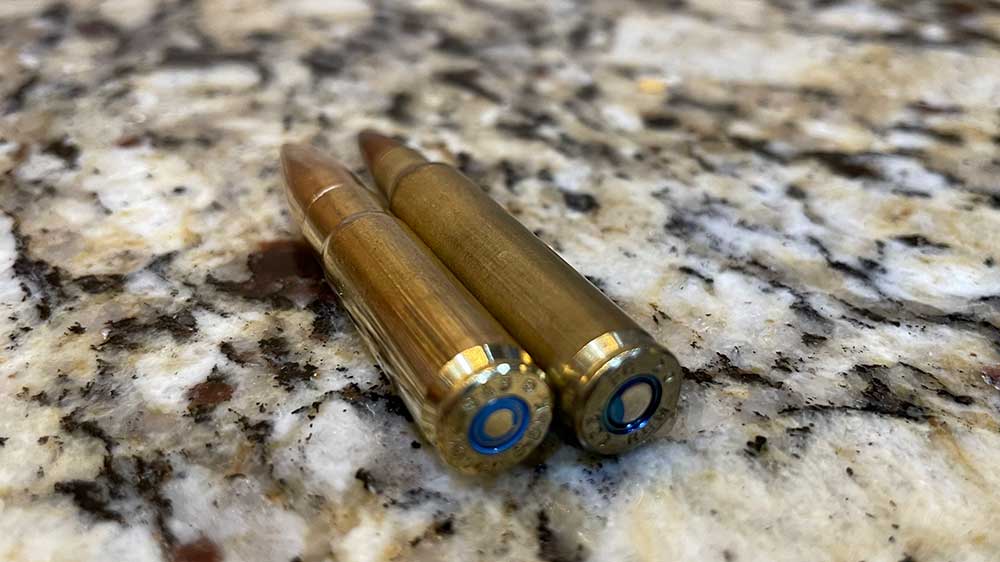
The casings for both the 5.56mm NATO and .300 AAC Blackout are almost identical. Both bullets have rimless and bottleneck case types, and both are used in rifles and AR pistols. Both use versions of the .223 Remington casing. The .300 Blackout is a necked-down version of .223/5.56mm.
| Specification | 5.56mm | .300 AAC Blackout |
| Bullet Diameter | 5.70 mm | 7.8 mm |
| Neck Diameter | 6.43 mm | 8.5 mm |
| Base Diameter | 9.58 mm | 9.6 mm |
| Case Length | 44.70 mm | 34.7 mm |
| Overall Length | 57.0mm | 57.0 mm |
From the above table, we can see that both cases have the same overall length.
300 Blackout Weight vs 5.56
There are different grain weights available for both the 5.56mm and the .300 AAC Blackout bullet. Some of the most common grain weights for 5.56mm NATO bullets are:
- 55 grain
- 62 grain
- 63 grain
If you look at a .300 BLK bullet itself, you’ll notice the size difference of the bullets immediately.
So obviously, the grain weight for the .300 blkout will be more than the 5.56mm. Some common grain weight you’ll see for 300 blackout is:
- 78 grain
- 110 grain
- 125 grain
5.56 vs 300 Blackout Power and Range
Both 5.56 and 300 blackout have been extensively tested. What testing has found is that 5.56mm at 500 yards had a high-velocity thanks to the lower weight of the 5.56mm NATO bullet. The round can cover more yards and keep velocity better than its heavier counterpart.
In testing fired from a 16″ barrel, it was shown that 300 blackout had nearly double the ft-lbs on the impact that a 5.56 round had 200 yards and 300 yards. The bullet drop becomes much more substantial at range with the .300 blackout round.
On the other hand, where .300 blackout really shines is out of a short barrel. Testing a 9″ barrel with .300 blkout 125 gr round had 993 ft-lbs at 100 yards. The 5.56mm 55 gr round had 191 ft-lbs at the same yardage.
There is a 1,000 feet per second discrepancy in the two rounds, but that’s expected with such a large grain weight difference.
Here’s a small table that compares the ballistic performance of 5.56mm NATO and .300 AAC Blackout in a standard 16″ barrel.
| Bullet Type | Grains | Feet Per Second (FPS) | Foot Pounds (Ft-Lbs) |
| 5.56mm NATO M1933 | 55 gr | 3083 | 1161 |
| .300 AAC BLK | 110 gr | 2393 | 1403 |
Recoil
Due to the 300 BLK bullet’s larger grain and increased powder, this round’s perceived recoil is stronger than the standard 5.56mm bullet. The 5.56 round has minimal recoil; increasing that recoil only slightly to get the performance the .300 blackout offers is almost not worth mentioning. Still, it had to be mentioned to be thorough.
Availability & Cost
5.56mm is a widely used round and can be purchased from your local gun store or almost any retailer that sells ammo online.
Many ammunition manufacturing companies are doubling down on all rounds, especially 5.56. The 5.56/.223 are cheaper rounds than the .300 blackout, even though before 2020, the .300 blackout cost per round was beginning to drop to reasonable levels (.50-.80¢ per round).
As of this post, Gorilla Ammunition has .300 Blackout in stock!
During “normal times,” 5.56/223 rounds lived in the range of .25¢ – $1 per round, depending on the grain you buy. Seemingly low cost compared to the BLK .300 bullet that costs between .80¢ – $3 per round as of this writing if you can find them.
Gorilla Ammunition has limited 5.56/.223 Ammo in stock as of this post!
5.56 vs 300 Blackout Magazines
One of the other interchangeable parts of the AR-15 is the magazines. You can use any 5.56 magazine for 300 Blackout.
There are 300 Backout specific magazines that are said to have a slightly stiffer spring to assist with feeding but I personally have never had any issue with standard 5.56 magazines.
There are really only two reasons to buy specific magazines for either caliber. Upgraded springs for 300 blackout is one and clearly separating your calibers because you do not want to mix these two calibers.
Some magazines have 300 blackout marketed on them but my personal choice is to use two different sizes. I use 30 round magazines for 5.56 nato and 20 round magazines for 300 blackout.
My personal favorite .300 blackout magazines are the 20 round Lancer Magazines.
Usage of the bullets
The 5.56 round is mainly known for its use in military and police applications. In the last decade, the round has been heavily adopted by gun lovers and sportsmen alike. Many people see the round as a great defense round and use them in their home defense rifles.
The 5.56/.223 round will probably be the mainstay for the AR-15 platform for many years to come, even though the .300 blackout is starting to give it a run for its money.
Special Operations and specialized military units have been testing and using .300 blackout for the better part of the Global War on Terror.
The round serves a particular purpose and is becoming more and more popular in the shooting community. Given the round’s increased cost, it hasn’t yet replaced the 5.56 as the target/plinking round of choice, but many prefer it in self-defense use cases.
It’s worth noting that many people have started to use the 300 blackout round in hunting applications, including bolt rifles, due to their ability to suppress the round well and impressive ballistics.
So as a good friend of mine suggested, building an identical 5.56 rifle and 300 blackout rifle for training/target rifle and the latter for defense would be rather genius and save a substantial amount of coin – long term.
5.56 vs 300 Blackout Terminal Ballistics
To dive further into 5.56 vs. 300 blackout, we have to look at terminal ballistics. Terminal ballistics is the behavior and effects of the projectile when it transfers its energy to the target.
The study of terminal ballistics includes factors such as penetration, fragmentation, and density.
Power (ft-lbs) isn’t everything when it comes to terminal ballistics range; impact and bullet drop are important factors. Even though the 5.56mm bullet diameter is smaller, its speed and fragmentation at the moment of impact make it a favorable candidate for lethal purposes. In some cases, the 5.56mm bullet can pierce through armor, but that needs some extra amplification.
The .300 BLK, on the other hand, is a larger diameter round that is often slower but hits with more ft-lbs on target. The 300 blackout is also a much better round when it comes to suppressing. Let’s talk about super and subsonic ammo.
Supersonic and Subsonic Ammunition
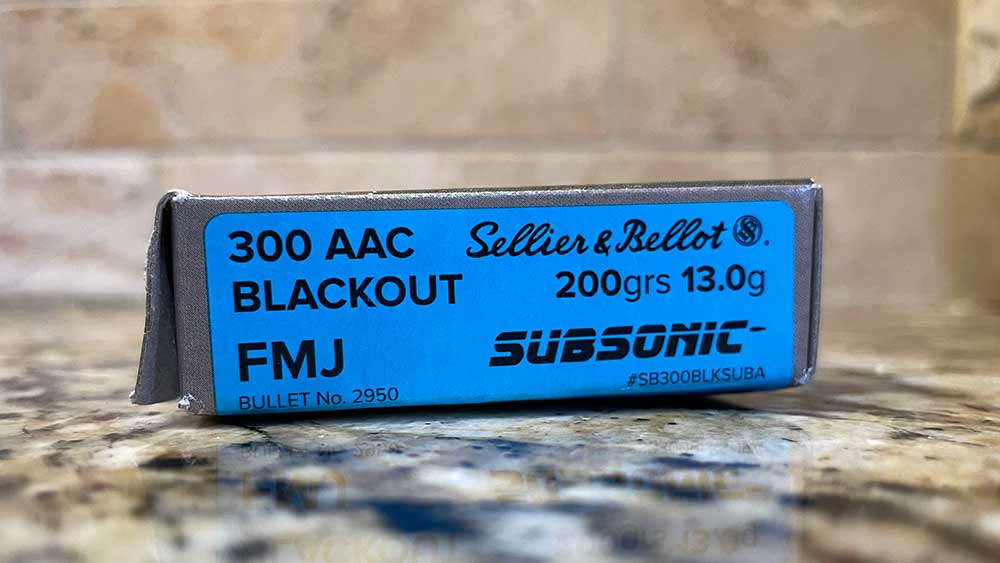
To better understand subsonic and supersonic ammo’s purpose, we must understand what subsonic and supersonic mean when it comes to bullets.
Supersonic is anything capable of achieving a rate greater than that of sound. This means it’s piercing the sound barrier. On the contrary, if speed is less than that of sound, then it is subsonic. The speed of sound is 1,125 feet per second.
Now that you have a basic understanding of supersonic and subsonic, let us talk about 300 blackout and .223 some more.
The 300 blackout round was developed to suppress. So the fact that .300 blackout has tons of subsonic options makes complete sense.
At the ear, shooting suppressed supersonic 300 blackout is nearly the same as 5.56mm. But with a subsonic round, the difference is night and day.
Shooting subsonic .223, while they exist, doesn’t really make sense ballistically. It basically takes your .223/5.56 round and nerfs it down to a .22LR. After all, we covered the major difference between .22LR and .223 before, and the major difference was powder.
Personally, I wouldn’t shoot subsonic ammo without a suppressor, no matter what gun I’m shooting. The increased cost of subsonic rounds doesn’t make sense without a silencer.
The best grain for subsonic speed is often disputed, but generally, the higher the grain weight, the more likely the round is to be subsonic.
What’s the best round 5.56 or 300 blackout?
The best round depends on your usage as we have discussed, the cost is a major factor. If you buy a gun for home defense and security, either caliber is a good choice to keep your family safe.
Shorter barrels are generally better for close quarters, so if that’s your plan, give 300 blackout a hard look. If you plan to suppress and you want to be the quietest you can be, 300 blackout is your go-to. But if you want cost-effective range fun that allows you to train more than once or twice a year, you might want to stick with 5.56/223.
Conclusion
In this article, we discussed the two most popular rounds for the AR-15 platform of rifles. We saw how both bullets are similar but also very different in application.
We highlighted their respective usage and what’s the best-case scenario that the rounds can be used. In our opinion, choosing the round comes down to personal choice and application. You can only decide what your application is and what best works for you since many great ammo manufacturers make high-quality factory ammo for both.
It helps that great barrel manufacturers like Ballistic Advantage, Noveske, and Q are making top-tier barrels for both calibers and many are making dedicated 300 Blackout Guns.
If you want to check out our other ammo made for the AR-15 platform, check out 458 SOCOM and all our ammo articles. Want to learn a little more about rifle cartridges? Check out two of the most popular bolt gun rounds available today the 6.5 Creedmoor vs .308 Winchester.


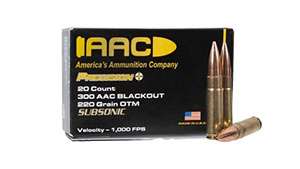
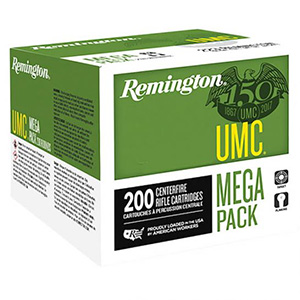

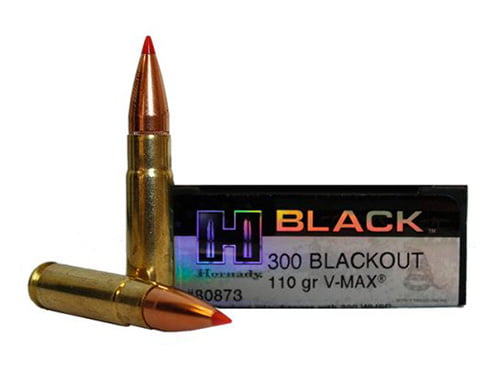

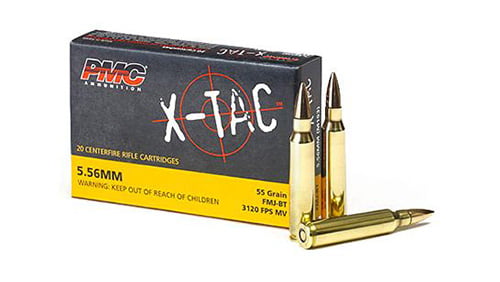

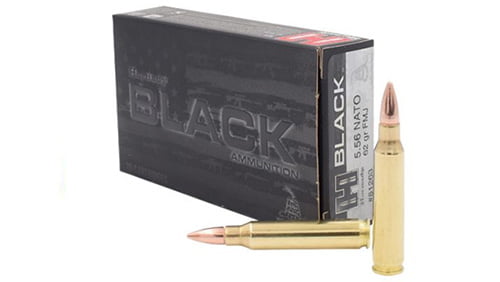
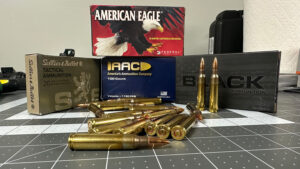
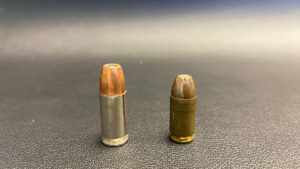
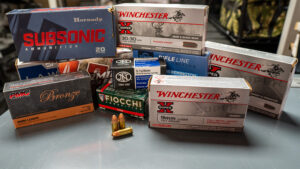
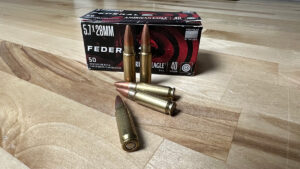
.25-06 and .270 vs 308.
I had bought a Stag 5.56 years ago and like it a lot. I have since bought a .300 upper so is interchangeable with just 2 pins. Best of both worlds for choice. My .300 mags have ID bands and paint markings so they don’t get mixed up.
Is .300 AAC Black AR-15 more reliable than its 5.56 counterpart? Thank you in advance.
No, they are both reliable rounds one is not more reliable than the other.
Recently purchased ATI AR15 from an online store with the description says 5.56x45mm NATO 7.50″. So got to the range, bought a box of 50 5.56 NATO. Loaded the magazine with just 5 rounds, first round won’t feed into the chamber, it gets jammed, tried this 2 or 3 times. The on duty range staff was kind enough to assist me, inspected the brand spanking new AR15 and was told that there’s a “head space” problem and I should return it to ATI, so I did. I called ATI and they confirmed of receiving my AR15, they asked for the serial number for confirmation, gave it to them, that’s when they told me that the AR15 is a 300 AAC blackout and not a 5.56x45mm NATO as described online. ATI said that they must have sent me the wrong AR15, I said but the serial number matched. I have emailed the online store because I cannot get a live person and greetings says I’ll get a faster response by emailing them but I still have not heard back, it’s been almost 5 days gone. I asked ATI if I damaged the AR15, they said not necessarily, they will do test firing with the correct .cal and will get back to me soon. So who’s to blame for this issue? Any advise is much appreciated. Thank you.
Two possibilities the company that sold you the gun shipped you the incorrect gun or ATI put the wrong barrel on the gun. I don’t know which to be the case and wouldn’t particularly blame anyone without more information. The only thing I can say about ATI is it’s known to be a budget brand and I don’t have any idea what their quality control looks like.
In regards to the part on magazines, regular 5.56 magazines work fine on the lighter grain bullets. I was having trouble with the 220gr in a standard 5.56 magazine because the ogive of the bullet was rubbing the magazine and causing feeding issues. I still use 5.56 mags for my 147gr rounds, but my 220gr rounds are all in Lancer 300aac specific mags, they have a larger opening to allow for the larger bullets.
Another bonus is when your cases for the 5.56 get dented (shoulder or cracked neck)you can cut them down and reform into 300 bk out.Recycle the brass from the range. Less popular head stamp cases (5.56 or 223)can be a bounty for 300bk out.
Very nice article. Reinvigorated my feelings for the two different calibers.
One note, in the section of “Power and Range”, the table at the end shows bullet weights in “gr” which are grains, but the caption over them reads in “GRAMS”, these are two totally different scales and can not be mixed unless a conversion is done. As in the picture of the Sellier & Bellot Subsonic Ammo, showing the bullet weight in both scales, 200grs and 13.0g respectively.
Also like to add, once you have one caliber rifle, all that is require for swapping the 2 (5.56/300BLK) is a ready-made upper, put together, so it can be installed on the same lower system being used. They use the same BCG, magazines, only difference is in the barrel. Some changes, may need to be made, concerning the buffer/weights, because of the difference of bullet weights in the 2 calibers. Adjustable gas systems, would shine here also. With the 5.56, you can drop into the 40 grain or below bullets and with the 300AAC, 220 grain bullets are common in subsonic. A 5-fold range-scale.
Good catch! Got it fixed.
It is simplistic to say that the speed of sound is 1,125 feet per second as it also depends on temperature, and to a much lesser degree altitude. At 100° is is 1,160, at 75° it is 1,134, at 50° it is 1,107 and at 32° it is 1,087
Very informative, I have both calibers and can’t wait for 5.56 to drop in price so it can be my plinker again. The suppressor for my 300 blk is also on the works so that I may have a home defense weapon as well.
If I could find ammo right now, I’d prefer 300 blackout. Since it’s the only thing in stock anywhere, I’m going to have to get a 300 Win Mag.
Nice blog. The 300 Blackout round has some great capabilities especially in suppressed applications with subsonic ammo. Price and lately availability (with everything really) is a problem. Another blog topic I would love to see is a comparison between .556, .308 and the new Hornady 6mm ARC.
I was eyeing the Ballistic Advantage 6mm uppers they just released, might have to grab one to do some “testing”!
Have to reload the 300 BO to make it affordable to shoot on a continual basis, it is an exceptional round with an exceptional price.
I would go with a dedicated 7.62×39 Nato AR… Over counter bullets cost less and a Reloading Person can still tweek them to subsonic or suppressed…
I remember thinking the 300 was an interesting cartridge when it was introduced. I had my doubts about it’s success, but it has surprised me.
I just wish I could find reasonable priced ammo for either…
Interesting comparison. I’ve been seeing various articles on the 300 but this helps put a good perspective on it.
I have an M4 223/5.56 lower receiver. Will it work with a 300 AAC upper receiver?
You should have no issues.
Recently bought my first AR. .556/.223. Good to know the difference between 556 and 300BLK.
I should have tried to get into 300 BLK a while back.
I love 300blk, and its a very capable hunting cartridge. I only keep two .223/5.56 anymore, and plan on building 300blk from here on out.
I personally have no use for a . 223 (5.56) because you can’t hunt here with it, has to be at least . 24 cal. So I’m 300 Blackout all the way, but I prefer the . 308 Win. LoL
I’m in the market for my first AR and after reading this article, I’m less sure of which to buy first. Unfortunately, I can’t afford to buy both at once (and my wife would probably kill me). Ammo availability being what it is right now, I may just have to base my decision on which rounds I can find within a reasonable price range.
Like someone else mentioned, I would be curious to read the comparison between 7.62 and 300 blackout.
Both are a small fortune right now!
I’m going to have to look into the 300 BO
I have both, both have advantages
The 300 blackout is such a nice round. I just wish it was cheaper
Well I gotta say this was the most informative breakdown I’ve ever read and when I get another rifle I plan to build for mainly home defense it looks like 300 blackout is the go to choice thanks for making this easy to understand too. Great article!
300 Blackout, suppressed, is very similiar to 45 ACP. At ranges of 200 yards or less, it is effective. Beyond that range it loses velocity and exhibits significant drop. If your target is beyond 200 yards, a .556 will generally serve better.
In addition to considering a comparison between .556 or 300 Blackout with 7.62×39 add in the 30-30. The typical carbine sized for 30-30 is used in many situations a 300 Blackout might be. The 30-30 round can also be suppressed, but generally is a much higher velocity round, which means more power, but also less effective suppression.
“and be AR15/M4 compatible”
I didn’t see it explicitly mentioned, but could an AR15 chambered in 5.56 safely fire 5.56,. 223, and the 300 blackout?
You probably figured this out already, but you can fire .223 from an AR-15 chambered in 5.56, but you cannot fire .300 Blackout from an AR-15 chambered in 5.56 WITHOUT CATASTROPHIC DAMAGE.
I have been in the army since 2010 as a infantryman and have deployed 3 times and I am currently a Drill Sergeant so I have been using the 5.56 round for some time now, however I own a AR platform in 300 blackout and while I know the 5.56 will continue to be the staple in the community and the military the 300 blackout round does have many positives over the 5.56 including pure take down power due to the bullet size being bigger and the 5.56 enters a body and rattles around a bit typically which causes a lot of damage but not instant death which is what you want in combat and eliminating a threat.
Stopping power of 300 blackout is prefect for home defense but going to the range i still prefer 556.
Maybe as 300 blackout gets more popular, the cost with drop. I’m sure more people would use it it was cheaper.
While I agree the 300 Blackout may be a better round for suppression and possibly home protection, I think a comparison between 300 blackout and 7.62×39 might be more interesting.
We plan to get to it! Thanks for the feedback!
^ What Gene said… still holds true. It would be a good comparison, and for both that, and still this, a ballistic chart comparing both w/ barrel lengths, maybe outdoor temps/elevation, drift, etc… makes total sense. Thanks!
One thing I didn’t see in your comparison… We can use the same AR lower, bolt and magazine for a 300 upper. However, how well does the 300 ammo fit into those 556/223 mags? Do the double stack well, or are the more of a single stack fit? Food for thought.
They do double-stack well! Thanks for this idea I’ll go back in and address the magazines.
Nice breakdown. Personally, I feel the only thing that could have made this article better is a comparative generic ballistic drop chart of the two.
That’s a good idea! We may go back and add one.
How about an over penetration article? I would think 300 would go through more than 1 wall.
I agree with Corwyn. A drop chart was the one missing detail of a good and informative article.
We will try to get one added since it’s such a popular request!
I love the 300 blackout subs in my Q honey badger. It’s almost hollywood quiet. If it weren’t for the price of ammo I’d shoot 300 blackout exclusively since most of my shooting occurs within 100 yards.